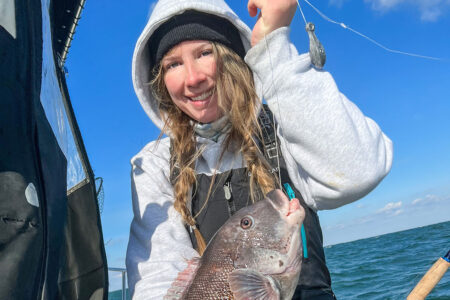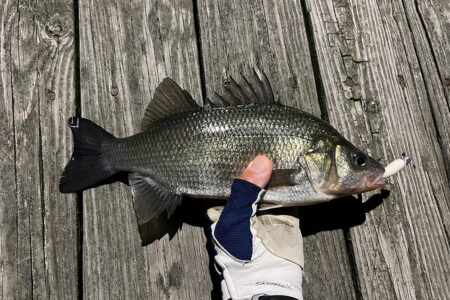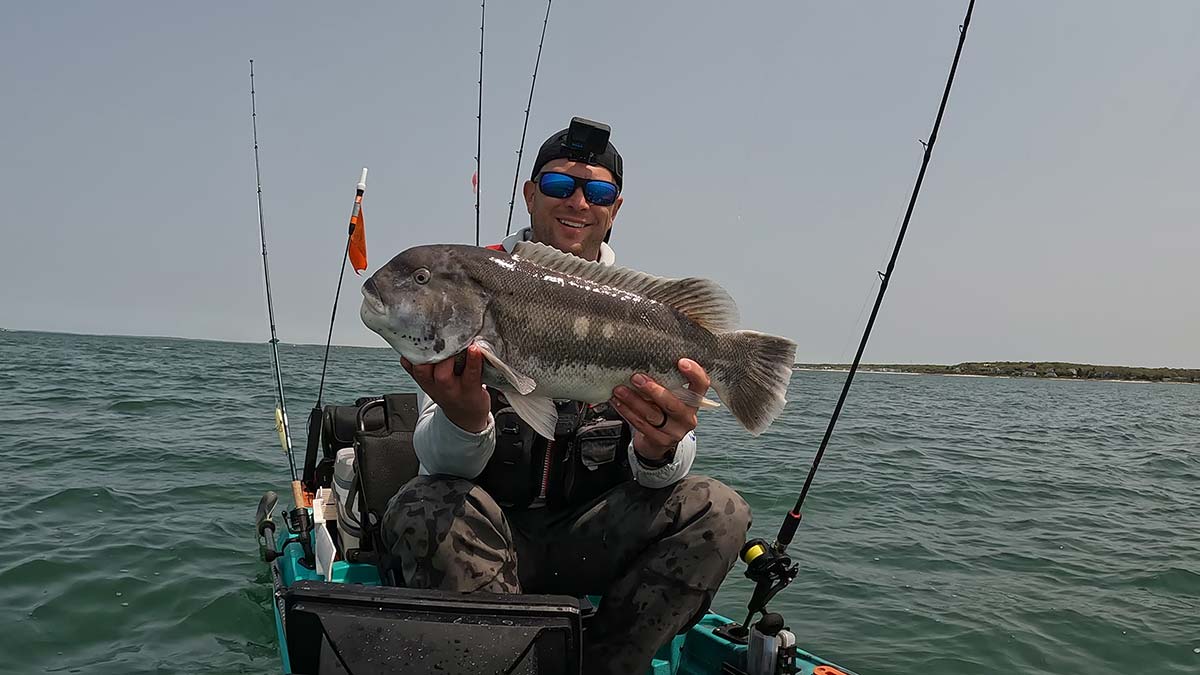
The kayak is a valuable tool when hunting blackfish in the fall.
Anyone that watches my YouTube Channel or Instagram will instantly know that I am head over heels in love with blackfish. My love for these incredibly strong and tasty fish began on a trip with friends 15 years ago off Montauk, and even though the fishing wasn’t great, I knew they were a special fish. Since then, I made it a point to take several party boat trips a year out of Rhode Island, with varying degrees of success with what I thought at the time to be decent fish to 5 pounds.
When I bought my first kayak, I was intimidated and frankly afraid of fishing from the kayak for tautog. It took me 6 years to work up the guts to do it. Once I did though, I quickly realized that I had been missing out on the best tautog fishing of my life! I am largely self-taught when it comes to tog fishing and as a result, I have become a much better tog fisherman for it. You don’t forget when you have to learn from your mistakes!
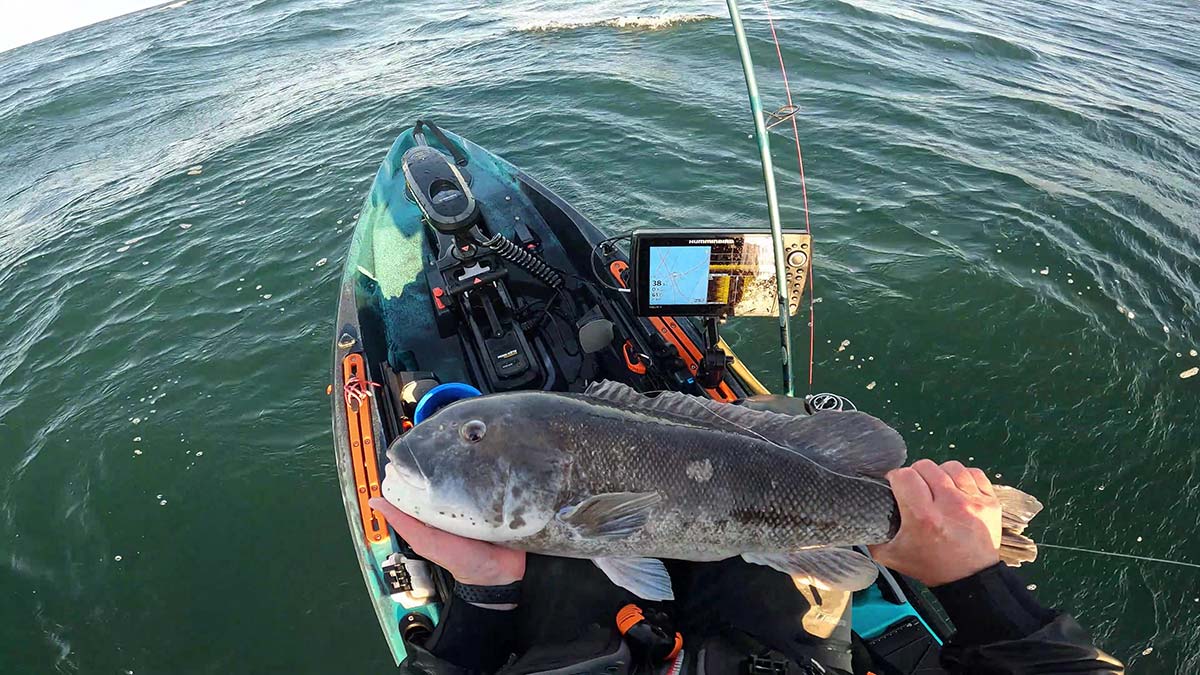
The Most Important Tog Tool
The most important item in my arsenal for tog fishing is my fishfinder, hands down. The availability of sidescan technology is probably the most important innovation to tog fishing I have seen in my years as an angler. Before I had sidescan, I would only find tog spots when I inadvertently drove over uncharted bottom and marked it as a waypoint or if I was poring over charts for rocky bottom. I use a Humminbird Helix 9 and the large screen really helps me see structure as I go along. I am looking for tog spots on every trip I go on, and I’m not talking just about tog trips, I am talking about every striper, fluke and sea bass trip. If you want my advice, never stop looking for tog spots!
While we are on the topic of finding good pieces of bottom, let’s get into what I am looking for. With side-scan, I can clearly see 100 feet or more in either direction of the kayak depending on the depth. I am looking for any hump or bump that casts a “shadow” behind it at which point, I waypoint it so that I can swing around to get a better look. If the structure is 2 or more feet off the bottom surrounding it, I will fish it. I don’t like single small, isolated rocks, as I would much rather that there is a several more in the vicinity of it. I find that the larger the rock pile, the more life there will be. This isn’t to say you can’t pull your next personal best off a single small rock, but you have a much better chance on a much bigger piece of structure.
The beauty of fishing in a kayak is the stealth factor as well as their shallow draft. I fish on some rock piles in the spring that are as shallow as 6 feet and when I set the hook into fish in these spots, I can get the smaller fish to the surface without even reeling. And the kayak really doesn’t seem to spook the fish at all, even in these shallow spots and once I get the bite going, it can be fast and furious. Hooking big fish in these spots that fiberglass boats can’t or won’t fish can get very interesting as the fish tend to run away from the kayak instead of the traditional up and down tog fights you see in deeper water.
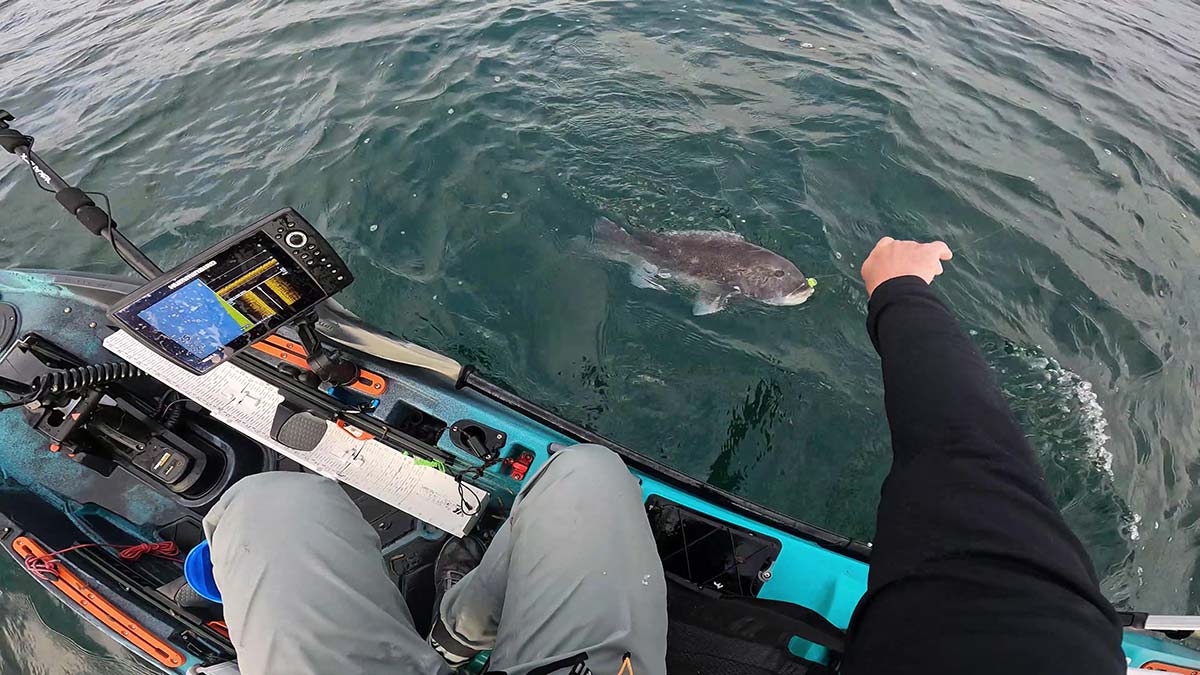
Any Kayak Can Work
When I started tautog fishing from my kayak, I only fished for them while drifting. Now don’t get me wrong, this works, and I landed many nice fish into the 8-pound range doing this, but I was never able to “build the bite” and caught mostly small fish. Oh, by the way, ‘building the bite’ this is a real thing with tog, don’t forget it. It wasn’t until I started anchoring the kayak that I started landing big fish on every trip. Safety is paramount though if you are anchoring. Keep your head on a swivel and be ready to react.
With simple modifications, any kayak can be made to work with an anchor. Anchor trolleys are very important for anchoring a kayak and you will want to mount a cleat on your kayak as well. I clipped a cheap aluminum carabiner to the anchor trolley loop and that is what I clip my anchor line to. This acts as a quick disconnect in case I need to release the anchor line in an emergency. Another important part of this system is the float I have tied to the bitter end of the anchor line. This is designed to help you recover your anchor line in the event you must drop it in an emergency.
Lastly, deploy the anchor line the same length on every set when possible. Once you set up once on anchor, you will get a very good idea of your anchor heading for subsequent sets if you miss the spot or swing off it. You will be able to use the track on your fishfinder to predict how far to set the anchor from the spot you want to fish. This isn’t an exact science but with a little experience, you will be anchoring like a pro in no time at all!
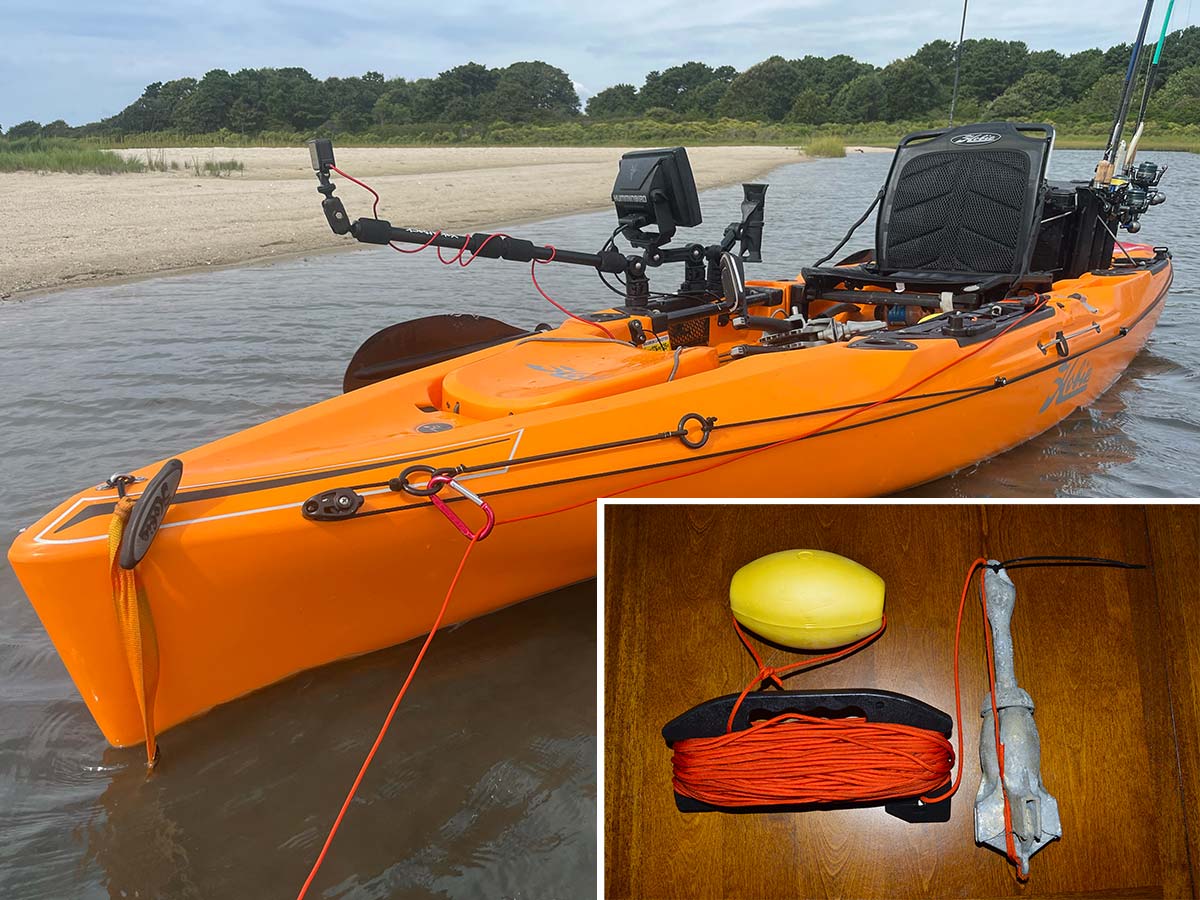
Where To Fish
Everybody fishes for tautog in their own way. Some of my best spots are actually the most obvious spots. I love large rocky bottom areas, the larger the better. You could – more than likely – set your anchor anywhere on top these areas and catch fish. This may not produce large fish or even keepers, but there will be life. Now here is the secret. Find the spot within the spot. I use my electronics to find bottom that is unique to the area I am fishing. A stray rock that provides a few feet of relief in a large ledge area is a goldmine for big fish. Don’t fish directly on top of this rock, fish on the edge. A few feet can make or break your bite. You are looking for the needle in the haystack metaphorically, but this needle is also going to be a goldmine if fished right.
| SPOTLOCKED |
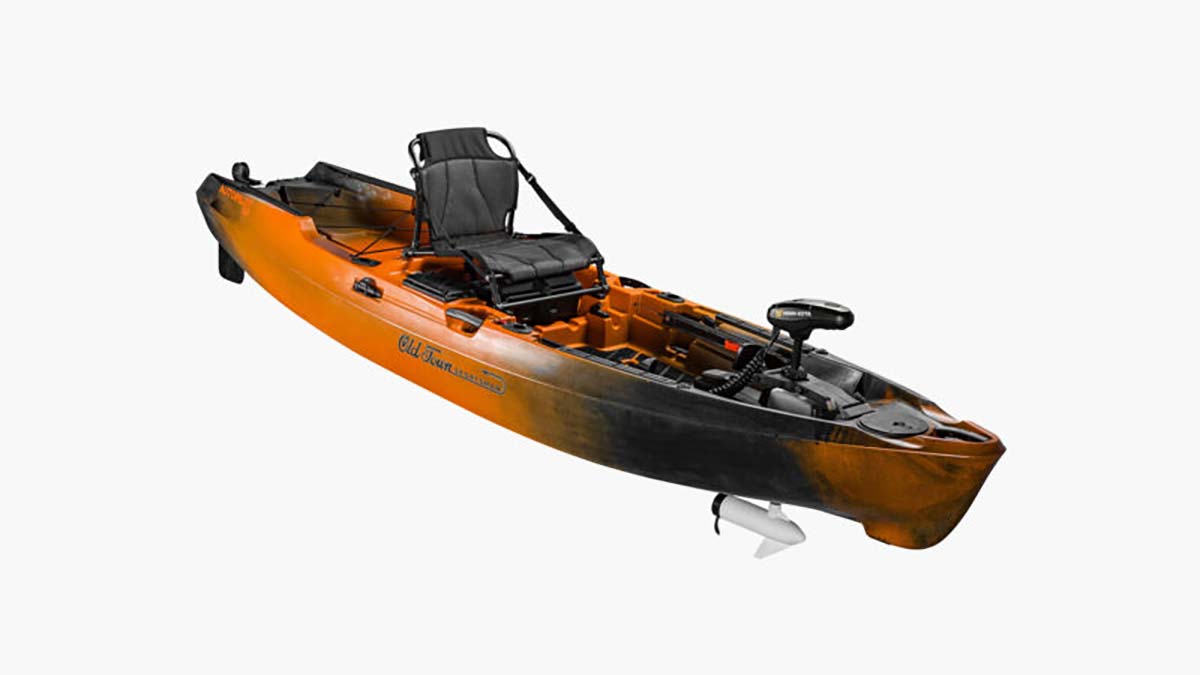
Yes, trolling motors have been added to kayaks by their owners, but I must give the nod to Olde Town for successfully integrating a 45-pound trolling motor into their Sportsman line of kayaks. This is practically a cheat code for tog fishing as the part for most people is anchoring accurately. The beauty of spot lock is that if you don’t get into the fish the way you want to, you can reset in seconds without having to pull your anchor. More time fishing will always result in more fish in the boat. If you want to check out these Old Town yaks with the integrated motor, take a ride to Black Hall Outfitters in Old Lyme, CT or the Goose Hummock Shop in Orleans on Cape Cod. |
Another one of my target areas is the deep water on the edges of exposed ledges and isolated rockpiles. In the fall, I tend to avoid shoal water areas. While fishing in shoal water or on top of large rocky structures may produce 100 fish days, these fish are for the most part small and will end up being a splash in the water instead of a thump in cooler if you catch my drift. I move off the top of the structure to the deep edge of it and find that the larger fish will be on the deeper side of the bottom structure.
In the fall, the deeper stuff usually holds the larger fish and more consistent fishing. As the season moves on, the larger fish will move off the nearshore bottom to structure further offshore. If you are fishing a great spot in the fall one week and the next week, it’s a ghost town, that’s a sign the fish are moving off to deeper more seaward structures where you can intercept them before they are out of range of the kayak.
Experiment with these techniques and you are sure to catch more tog on your next trip. Think outside the box and try discovering new areas to target that you have never caught before. You just never know when you will discover that new hotspot that will produce your next monster blackfish!

